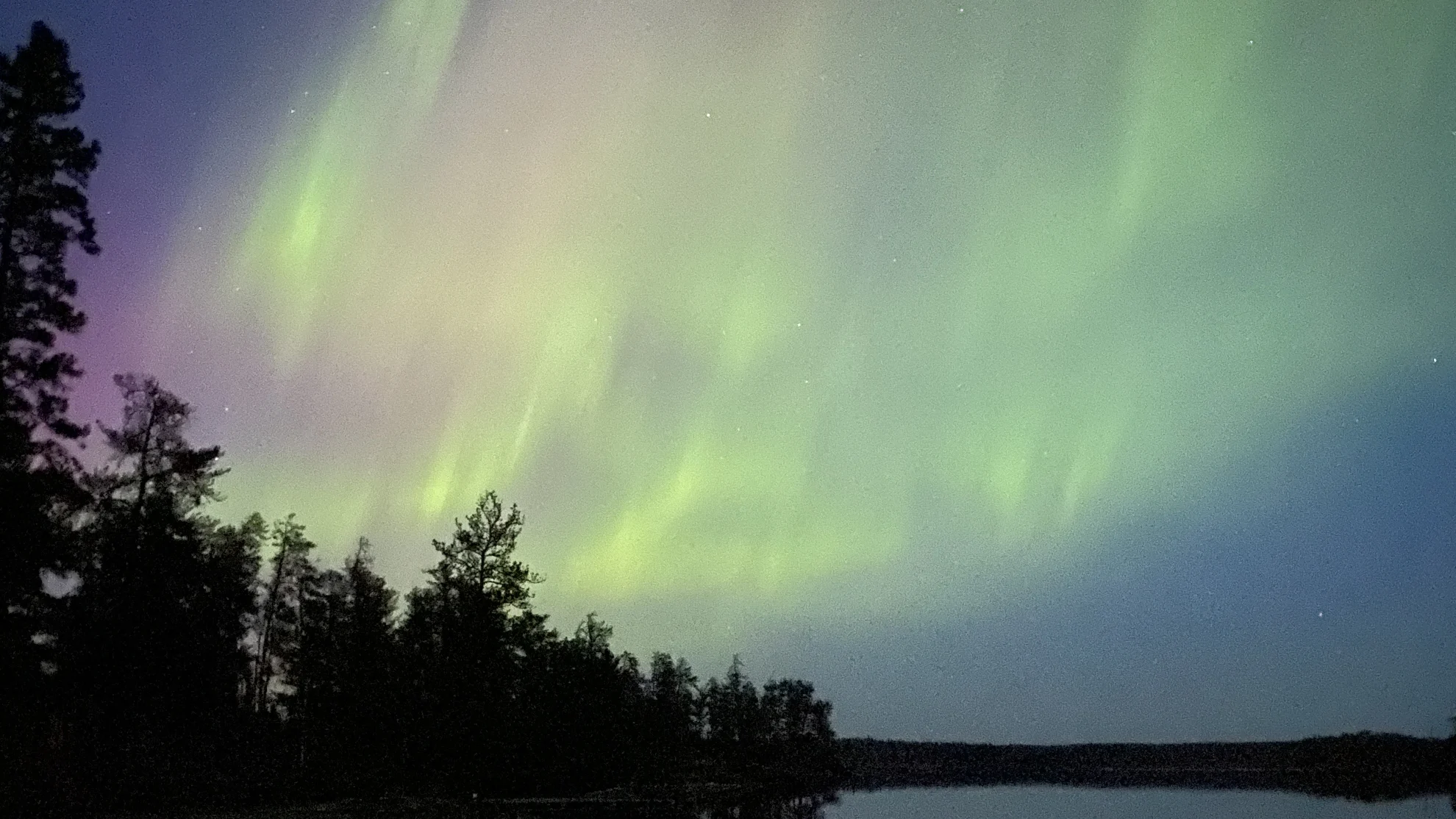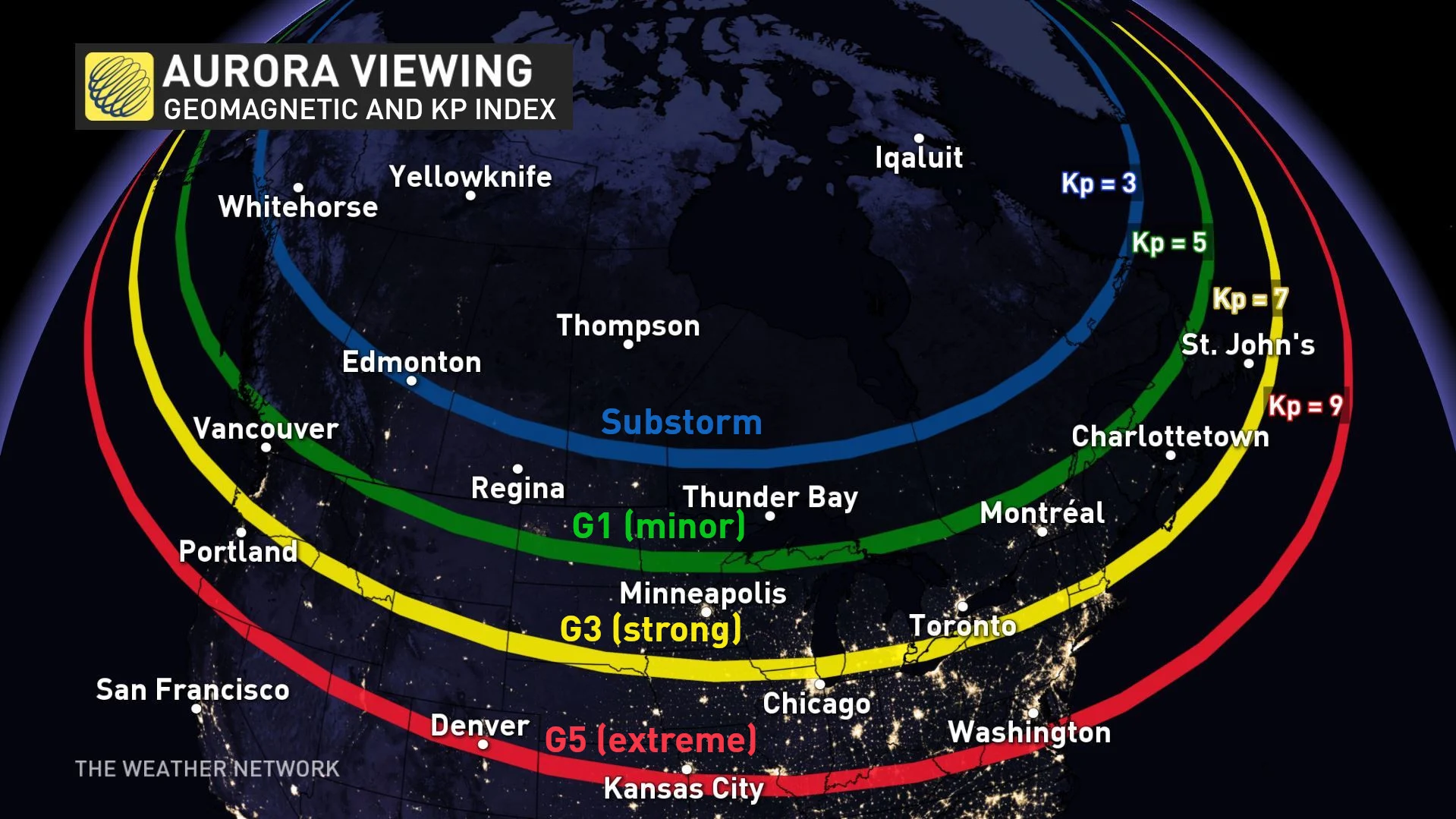
The Northern Lights may shine across Canada Saturday night
An immense coronal mass ejection erupted from the Sun on Wednesday, and when it sweeps past Earth it could light up the night sky with auroras.
Eyes to the northern sky on Saturday night for a chance to spot the Aurora Borealis.
On Wednesday, August 30, NASA's eye on the Sun, the Solar Dynamics Observatory, captured a 'canyon of fire' being torn open on the Sun's surface.

The six panels arrayed across this image of the Sun were captured between 20-22 UTC (4-6 p.m. EDT) on Wednesday, August 30, 2023, by SDO's Atmospheric Imaging Assembly camera. The bright lines denote the expanding boundaries of the 'canyon of fire'. Credit: NASA/Scott Sutherland
Space weather scientists have seen this kind of activity before. It occurs when a massive arc of solar material, known as a 'prominence' or 'filament', tears itself away from the Sun's surface to become a coronal mass ejection (CME).
As the filament departs, it disrupts the Sun's magnetic field around it, raising walls of hot, bright solar plasma that can reach tens of thousands of kilometres high and hundreds of thousands of kilometres long. These walls of plasma expand away from each other, forming the widening 'canyon of fire'.
In the hours afterward, SDO's 'sister' satellite, the NASA/ESA Solar and Heliospheric Observatory (SOHO), confirmed the filament eruption, as it expanded away from the Sun as a coronal mass ejection.

Three panels from SOHO's coronagraph instrument reveal the expanding 'partial halo' coronal mass ejection (CME). Arrows indicate the approximate leading edge of the solar storm. Credit: NASA/Scott Sutherland
According to NOAA's Space Weather Prediction Center, this solar storm will likely sweep past Earth late in the day on Saturday. As a result, they are currently forecasting a minor (G1) geomagnetic storm overnight from Saturday into Sunday morning.
However, they also noted that the timing and intensity of the geomagnetic storm could vary depending on exactly when the CME arrives and how much of an impact it has on Earth's magnetic field.

Credit: NOAA SWPC
Some very powerful solar storms can have severe impacts. They can cause faults and failures with spacecraft in orbit of Earth. They can even result in blackouts as they affect power grids on the ground.
However, a G1 geomagnetic storm is too weak to be of any danger. The most common effect of a storm of this strength is that we will see displays of the Aurora Borealis (aka the Northern Lights) farther south than usual.
These displays are typically restricted to northern Canada during 'quiet' space weather. A G1 geomagnetic storm will tend to push them as far south as Newfoundland, central Quebec, the northern shores of Lake Huron and Georgian Bay, across the southern Prairie provinces, and through central British Columbia (the green line on the map below).

Stronger geomagnetic storms tend to be caused by encounters with more intense coronal mass ejections, such as those that erupt into space following a powerful X-class solar flare. They can also occur when the impacts of a CME combine with those from the solar wind, ramping up the magnetic disturbance.
In some cases, especially around the spring and fall equinoxes, even minor solar storms can produce substantial impacts due to what's known as "equinox cracks".
Equinox cracks are openings in Earth's geomagnetic field that form when the magnetic field of a passing CME points in the opposite direction of Earth's magnetic field, and the interaction between them causes the two fields to partially cancel each other out. When one of these gaps forms, a large number of charged particles from the CME and the solar wind are allowed to stream into the upper atmosphere from space.
Charged solar particles are the source of the auroras, as they pass on their energy to atoms and molecules of oxygen and nitrogen in the atmosphere, causing them to emit flashes of coloured light. Thus, the deluge of them flowing in through an equinox crack can produce exceptionally bright aurora displays that are visible much farther south than they would typically appear.
(Thumbnail image courtesy Tulip Carter, who captured this view of the Aurora Borealis from Winnipeg on May 19, 2023, and uploaded it into The Weather Network's UGC gallery)











